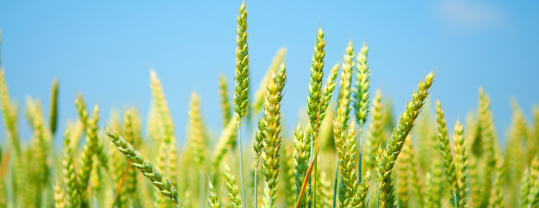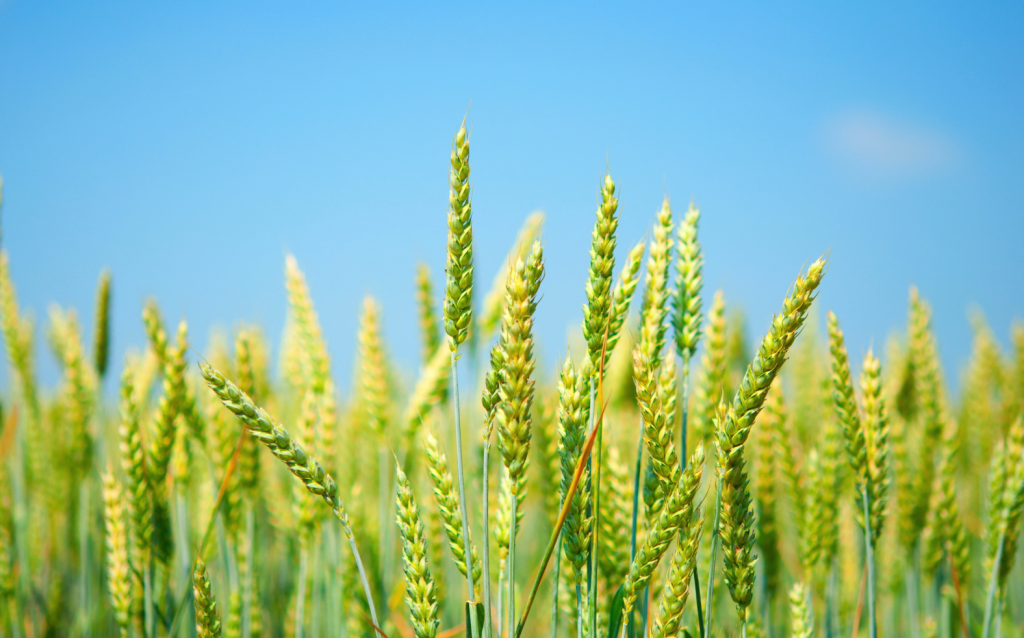By Boyd Padgett, Steve Harrison, Trey Price, and David Kerns, LSU AgCenter
Nitrogen (N) management can dramatically influence wheat grain yield. The current recommendation is to apply 90120 lb/A of N during the growing season. The exact rate depends on soil type, previous crop, and crop condition.
The total of N amount should be split over two to three applications beginning at green up (Feeke’s Growth Stage 5) and ending with an application at or just prior to jointing (F7).
This strategy is intended to minimize N loss due to volatilization, leaching, or denitrification. The initial application is usually made during early February in South Louisiana and mid-February in North Louisiana.
With all of the rainfall we have experienced since planting it is likely that most wheat fields are delayed in development and need nitrogen to stimulate tillering. With that in mind, growers should consider an initial topdress N application in late January even if the crop is not at F5.
Sulfur (S) and Phosphorus (P) can also impact wheat growth and development. If S is deficient, ammonium sulfate blended with urea in the initial topdress is a good option to remedy this deficiency. Phosphorus can be adequate in the soil, but may not be available due to wet and cool conditions. Producers can apply DAP to supply N and P.
Wheat that was planted late needs to have the maximum opportunity to grow. Anything that stresses the plant will reduce yield, including inadequate fertility, weed competition, and poor drainage.
Late-planted wheat will probably benefit from 20-30 pounds of pre-plant N to stimulate tillering, depending on how late it is planted and how much residual N is in the soil. Weed control and drainage should be optimum to prevent stress that will slow crop growth.
Many of the problems we have with late-planted wheat occur because the crop sits in cool, waterlogged soils and cannot access nutrients until spring. The crop remains in this condition during the winter then puts up heads from very small plants in the spring. Wheat will tiller and grow all winter if we give it the opportunity.
Even though diseases are usually not a problem until spring, keep an eye out for early season stripe and leaf rust. Stripe rust is a cool season rust and epidemics can initiate during the winter in susceptible varieties. Leaf rust is less of a problem during cool weather, but warmer temperatures can result in favorable conditions for development.
Fungicide applications prior to flag leaf emergence are usually not necessary; however, fields should be closely monitored where epidemics are present. Stripe rust development is most aggressive when temperatures are 50 to 65o F in the presence of intermittent rain or frequent dews (6 to 8 hours).
However, development can occur when temperatures range from near freezing to 70o F. Initial infections on seedling wheat may not have the characteristic striping pattern that occurs on older plants. Seedling infections often occur in ‘thumb-sized’ clusters on the leaves, as opposed to a random distribution that occurs with leaf rust.
Infections may appear as linear rows of small yellow to light orange pustules (stripes) on the lower leaves during late winter or early spring.
Striped patterns are typical of infections in older pants. If conditions remain favorable for development, pustules may cover the entire upper leaf surface, as well as portions of the head. A lifecycle (infection to reproduction) can be completed within 7 to 10 days under optimum conditions.
Leaf rust is usually evident later in the season than stripe rust. This is because the leaf rust pathogen requires warmer temperatures for development. Initial symptoms of leaf rust begin as light orange/yellow spots, usually on the lower foliage.
As the disease develops, small pin-point pustules form on the upper leaf surface. Pustules are deep orangered and occur randomly on the leaf. Similar to stripe rust, pustules can cover the entire leaf surface if conditions remain favorable for development. The disease develops optimally when nighttime temperatures are 50 to 70o F and leaves remain wet for 6 to 8 hours.
A number of aphids that infest wheat are capable of transmitting BYD, particularly the bird cherry-oat aphid. Where BYD is commonly problematic, preventative pyrethroid applications targeting aphid during the winter have proven effective. The goal is to reduce the initial aphid source and avoid spreading BYD. Detecting aphids at this time is difficult.
However, waiting until spring or when aphids are more numerous is ineffective in preventing BYD. In Louisiana, BYD is not considered common enough to warrant automatic preventative sprays.


